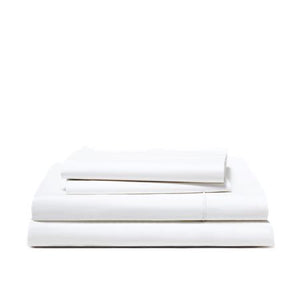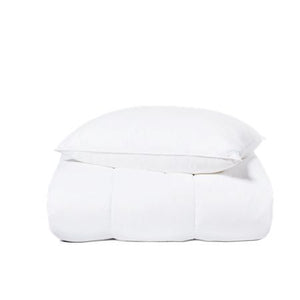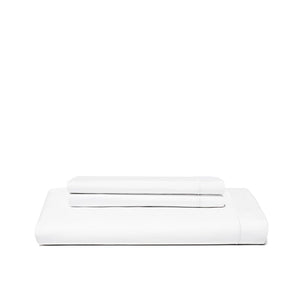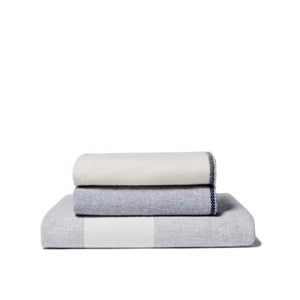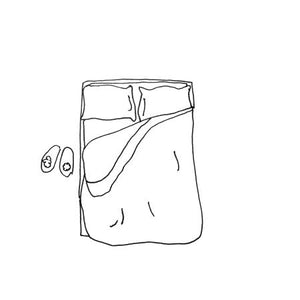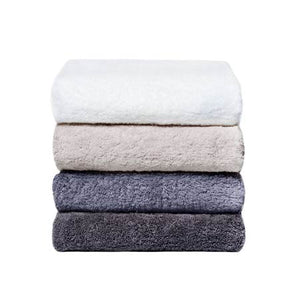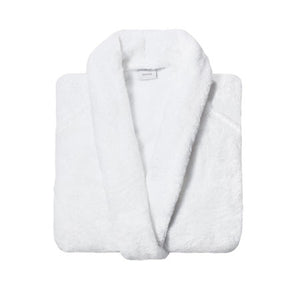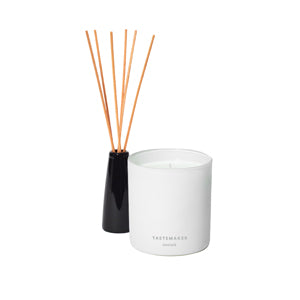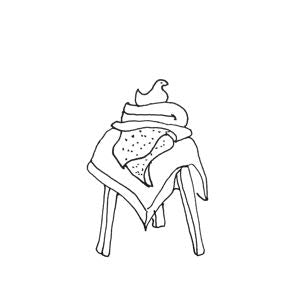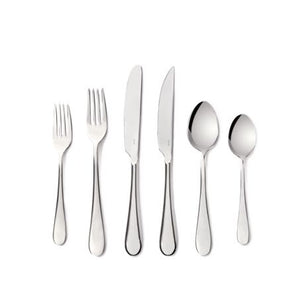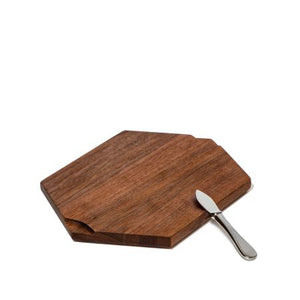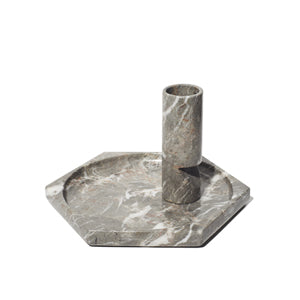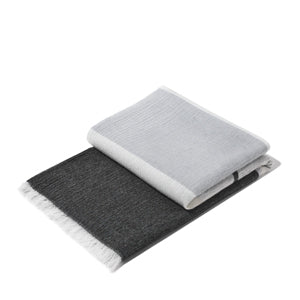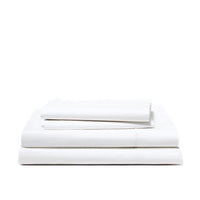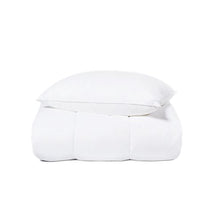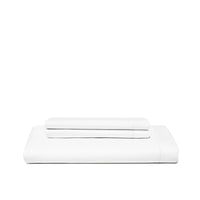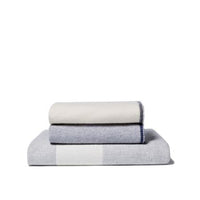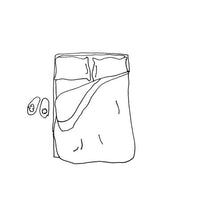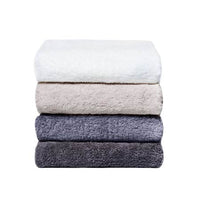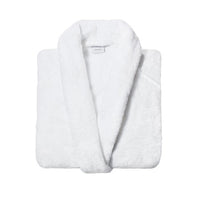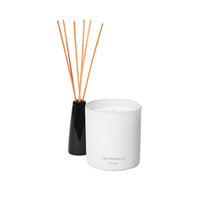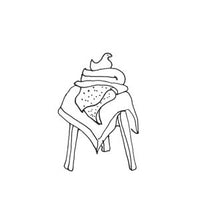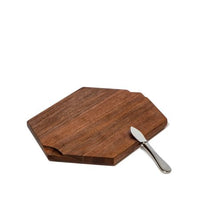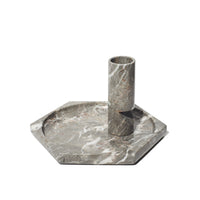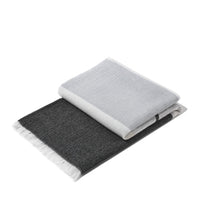Learning how to put on a duvet cover can seem tricky, but it doesn't need to leave you in a tangle. Master a simple technique and transform this chore into a quick, satisfying task.
Turn the duvet cover inside out and lay it flat on the bed to mirror the duvet's alignment. Roll both together towards the end, then invert the cover over the bundle and unroll. In moments, your bed is perfectly made.
Curious about mastering this bed-making game-changer? Read on for detailed steps and tips.
What You’ll Need To Put on a Duvet Cover
Before putting on a duvet cover, you'll need a few essential items. These include a duvet insert, a duvet cover, and any ties or buttons that come with the cover.
It's also a good idea to have a clean and uncluttered bed, as well as a clear workspace to lay out your duvet cover.
What To Prepare
To begin, start by removing any pillows or decorative items from your bed. This will give you more space to work and prevent anything from getting in the way during the installation process.
Next, spread out your duvet cover on top of your fitted sheet, making sure it's inside out and the opening is at the bottom of the bed.
Now it's time to add your duvet insert. Place it on top of the inside-out duvet cover, making sure all sides and edges align. If your duvet cover comes with ties or buttons, make sure to secure them at the top corners of the cover to keep the insert in place.
Materials to Consider
Keep in mind that different materials may require different care instructions. Be sure to check the label on your duvet cover and duvet insert for any specific washing or care instructions.
It's also important to choose a duvet cover and insert that is the appropriate size for your bed and mattress.
Techniques for Installing a Duvet Cover
When it comes to putting on a duvet cover, there are two main techniques you can use: the Roll and Stuff Method and the Classic Approach. Both methods have their advantages, so it's up to you to choose the one that works best for you.
Roll and Stuff Method
The Roll and Stuff Method, also known as the Burrito Method, is a popular technique for putting on a duvet cover. Here's how it works:
- Lay the duvet cover flat on your bed, with the opening at the foot of the bed.
- Place your duvet on top of the cover, making sure that all the corners and edges are aligned.
- Starting at the head of the bed, roll both the duvet and the cover tightly together, like a burrito.
- Once you reach the foot of the bed, tuck the ends of the cover under the duvet.
- Unroll the duvet and cover together, and shake them out to fluff them up.
The Roll and Stuff Method is great because it doesn't require any corner ties or complicated instructions. However, it can be a bit tricky to get the duvet and cover rolled up tightly enough.
Classic Approach
The Classic Approach is the traditional method for putting on a duvet cover. Here's how to do it:
- Turn the duvet cover inside out and lay it flat on your bed, with the opening at the foot of the bed.
- Place your duvet on top of the cover, making sure that all the corners and edges are aligned.
- Starting at the head of the bed, pull the duvet cover up and over the duvet, so that the duvet is inside the cover.
- Button, zip, or tie the duvet cover closed, making sure that the corners are secure.
The Classic Approach is straightforward and reliable, but it does require corner ties or some other way to secure the duvet inside the cover. It's a good choice if you want to make sure your duvet stays in place.
How To Secure the Duvet
Once you have successfully inserted the duvet into the cover, it's important to secure it properly to prevent it from slipping or shifting around. Here are some strategies for securing the duvet:
Tie and Button Strategies
One common way to secure a duvet is by using ties and buttons. If your duvet cover has ties, you can simply tie them around the corners of the duvet to keep it in place. If your cover has buttons, you can button them up to secure the duvet.
Another way to secure the duvet is by using duvet clips. These clips can be attached to the corners of the duvet and the cover to keep them in place. They are especially useful if your cover doesn't have ties or buttons.
If your duvet cover has a zipper, you can zip it up to keep the duvet inside. Some covers also have lace closures, which can be tied together to secure the duvet.
Snaps are another type of closure that can be found on some duvet covers. If your cover has snaps, simply snap them together to secure the duvet.
How To Maximize Comfort and Design of Your Duvet Cover
Choosing the Right Fabrics
When it comes to choosing the right fabric for your duvet cover, there are a few things to consider.
Firstly, you want to choose a fabric that is comfortable to sleep in. Cotton is a popular choice for duvet covers as it is soft, breathable, and easy to care for. Linen is another great option for those who prefer a more textured feel. Silk is a luxurious choice, but it can be more expensive and requires special care.
In addition to comfort, you also want to consider the design of your duvet cover. Cotton and linen come in a variety of colors and patterns, making it easy to find something that matches your personal style. Silk is often more limited in terms of color and pattern options.
If you have allergies, it's important to choose a fabric that is hypoallergenic. Cotton and linen are both hypoallergenic options, while silk may not be suitable for those with allergies.
Ensuring Proper Fit
To ensure maximum comfort, it's important to choose the right size duvet cover for your comforter.
If your duvet cover is too small, it will be difficult to put on and may not stay in place. If it's too big, your comforter may shift around inside the cover, leading to an uncomfortable night's sleep.
To determine the right size, measure your comforter and choose a duvet cover that is slightly larger. This will ensure a proper fit and prevent your comforter from shifting inside the cover.
It's also important to consider the type of bed sheets you have when choosing a duvet cover. If you use a top sheet, you may want to choose a duvet cover with a top button closure to keep everything in place. If you don't use a top sheet, a duvet cover with a zipper closure may be a better option.
Maintenance and Care
Routine Cleaning
To keep your duvet cover clean and fresh, it is important to wash it regularly. The frequency of washing depends on how often you use it and whether you use it with a top sheet.
If you use a top sheet, you may be able to wash your duvet cover every few weeks. If you don't use a top sheet, you may need to wash it more often.
When it comes to washing your duvet cover, check the label for specific instructions. Most duvet covers are machine washable, but some may require dry cleaning.
If your duvet cover is machine washable, use a gentle cycle with cold water and a mild detergent. Avoid using bleach or fabric softeners, as they can damage the material.
After washing your duvet cover, hang it to dry or tumble dry on low heat. Avoid high heat, as it can damage the material and cause shrinkage.
If your duvet cover is made of down or a down alternative, make sure it is completely dry before using it again.
Managing Wrinkles and Clumping
Wrinkles and clumping are common problems with duvet covers. To prevent wrinkles, remove your duvet cover from the dryer as soon as it is dry and fold or hang it immediately.
If you prefer a more polished look, you can iron your duvet cover on a low heat setting.
To manage clumping, shake out your duvet cover before putting it on your comforter. If you notice any clumps after putting on the duvet cover, you can try shaking it out again or adjusting the comforter inside.
Additional Considerations
Sizing and Layering
When choosing a duvet cover, it's important to consider the size of your duvet. A duvet cover that is too small will not fit properly and will be uncomfortable to sleep under. On the other hand, a duvet cover that is too large can be messy and difficult to manage.
Always check the size of your duvet before purchasing a duvet cover to ensure a proper fit.
Layering is also an important consideration when it comes to duvet covers. If you live in a colder climate, you may want to consider layering your duvet cover with a blanket or additional duvet. This will provide extra warmth and comfort during the colder months.
Aesthetic Choices
Duvet covers come in a variety of designs and colors, so it's important to choose one that matches your personal style and the overall design of your bedroom. Some people prefer solid colors, while others prefer patterns or prints.
Consider the color and design of your bedding, as well as the overall aesthetic of your bedroom, when choosing a duvet cover.
When it comes to putting on your duvet cover, there are several methods you can use. The rolling method is a popular choice, but some people find it messy and difficult to manage. Another option is the invert method, which involves turning the duvet cover inside out and placing it over the duvet.
Whichever method you choose, be sure to secure the duvet cover with the zipper or ties to keep it in place.
If you're having trouble putting on your duvet cover, don't be afraid to ask a friend for help. Two people can make the process much easier and less frustrating.
Additionally, be sure to check the tags on your duvet cover for any special care instructions, such as washing or drying recommendations.
Conclusion
Dressing your duvet with a new cover is simple and quick with the right steps. Just turn the cover inside out, align it with your duvet, and then roll or stuff it into place. In no time, your bed will look great and feel inviting.
Ready to refresh your bedroom with ease? Check out Snowe Home's selection of quality duvet covers and transform your bedding experience. Visit us for effortless elegance and more bed-making tips.
Frequently Asked Questions
What is the easiest method to put on a duvet cover by yourself?
Putting on a duvet cover by yourself can be challenging, but the easiest method is to use the burrito method. This method involves laying the duvet cover flat on the bed, placing the comforter on top, rolling both the duvet cover and comforter together like a burrito, and then unrolling them inside the cover.
Are there any tricks to securing a duvet cover with ties?
Yes, there are a few tricks to securing a duvet cover with ties. First, make sure to tie the corners of the duvet cover to the corner tags of the insert. This will prevent the comforter from shifting around inside the cover. Second, tie the ties tightly to keep the cover in place.
What steps should I follow to put a duvet cover on a comforter?
To put a duvet cover on a comforter, start by turning the cover inside out and laying it flat on the bed. Then, place the comforter on top of the cover and align the corners. Next, tie the corner ties of the cover to the corner tags of the comforter. Finally, flip the cover right side out and close the opening.
How do you use a duvet cover with a zipper?
Using a duvet cover with a zipper is similar to using one with buttons or ties. Simply lay the cover flat on the bed with the opening at the foot of the bed, place the comforter on top, and zip up the cover. Make sure to align the corners and shake the comforter to ensure it's evenly distributed inside the cover.
Is there a simple hack to change a duvet cover quickly?
Yes, there is a simple hack to change a duvet cover quickly.
Turn the duvet cover inside out and lay it flat on the bed with the opening at the foot of the bed.
Then, place the comforter on top and align the corners.
Grab both the cover and comforter at the top corners and flip them over to reveal the right side of the cover.
Finally, close the opening and shake the comforter to distribute it evenly inside the cover.
